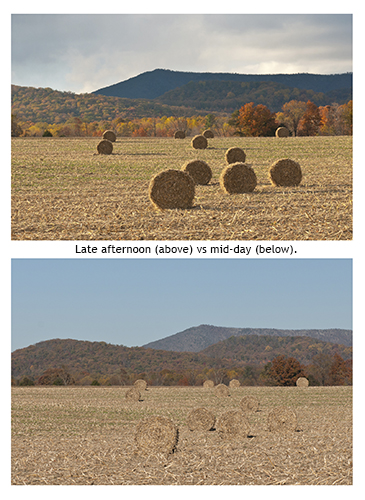Capturing the Quality of Light
April 23, 2014 by Marie Joabar

You often hear photographers talk about the “golden hour” or the “magic light” just after sunrise and shortly before sunset and there is a good reason for it. These are the most opportune times to photograph outdoors because of the quality of light. No matter what your subject, from landscape scenes to natural light portraits, take advantage of this time to capture dramatic images.
For a short period of time after sunrise, the sun is low in the sky all that it strikes is bathed in warm golden light. Subjects are side-lit creating interesting shadows and conveying a sense of depth. The same is true later in the day for a few hours before sunset.
In the mornings, everything that faces east is beautifully lit, so with your back to the sun, shoot till your heart’s content. In the late afternoon, photograph all that is facing west as sun goes down.
If shooting people during this time, it’s easy enough to position them many ways depending on the look you’re after. Positioned facing the light gives them a warm tone while having them backlit gives them a glowing look.  Using a reflector gives you the flexibility to put their back to the sun or even position them in the shade and bounce light on them with the reflector.
Using a reflector gives you the flexibility to put their back to the sun or even position them in the shade and bounce light on them with the reflector.
Whether you’re close to home or far away, plan ahead and know which way is east and west so you can make the most of the light. Consider carrying a compass to orientate yourself so when you see something you’d like to photograph, you’ll know whether to return in the morning or the early evening to shoot it.
Mid-day is the time to pack it up (or shoot indoors) until late afternoon rolls around. As the sun rises higher in the sky, the harsh overhead light causes jarring contrast between the bright highlights and deep dark shadows.
Immediately following sunset for about 20 minutes or so, there is still plenty of light to work with but the color of the light is now a pale blue. Even though the sun has slipped below the horizon, light is still being reflected. If we’re lucky to have a sky dotted with clouds, we may find it painted in various shades of orange, magenta and crimson, great for dramatic sunsets or for silhouettes.  The same is true in the morning before sunrise but in reverse, we find dark blue clouds turning lighter and becoming rose colored until at last the sun rises over the horizon. These soft pinks and cool blues portray quiet and stillness and can make a peaceful looking image.
The same is true in the morning before sunrise but in reverse, we find dark blue clouds turning lighter and becoming rose colored until at last the sun rises over the horizon. These soft pinks and cool blues portray quiet and stillness and can make a peaceful looking image.
About a half an hour after sunset, we find the deep royal blue sky of civil twilight. This is the in-between time when there is no more daylight but it is not yet dark. It’s a wonderful time to capture artificially lit scenes because it’s dark enough for the lights to show their color but light enough to still see the background and the shape of the subject you’re shooting. Beyond Civil Twilight, the sky goes dark and the same scenes are not as dramatic with the background now black.
On cloudy and overcast days, take advantage of the natural diffuser. Clouds spread the light evenly throughout a scene leaving no shadows or sharp contrast. This diffused light is great for shooting waterfalls - on sunny days, the white in the falls is too harsh in comparison to the darker forest area surrounding it so it’s tricky to make a good exposure. Flowers and gardens also benefit from the diffused light. If it’s sunny, purchase a diffuser to mimic the way the clouds spread and soften the light.
 Often we’ll pass a scene that is poorly lit and dismiss its potential, yet when we pass by it again with the right light on it, we see it’s worth the time to stop and photograph. Timing is everything when aiming for this magic light, often we’ll be at the right place but at the wrong time. Don’t despair, just try to return when you know the light will be better.
Often we’ll pass a scene that is poorly lit and dismiss its potential, yet when we pass by it again with the right light on it, we see it’s worth the time to stop and photograph. Timing is everything when aiming for this magic light, often we’ll be at the right place but at the wrong time. Don’t despair, just try to return when you know the light will be better.
Many times we head out knowing exactly where and when the light will be best only to have Mother Nature throw us a curve ball and roll out a blanket of clouds. As much as we want to photograph despite it, most likely we’ll end up with photos that belong in our collection of “Could have beens.” Some scenes absolutely need the sun so return to the spot another time and hopefully you’ll be rewarded then with beautiful golden light.
